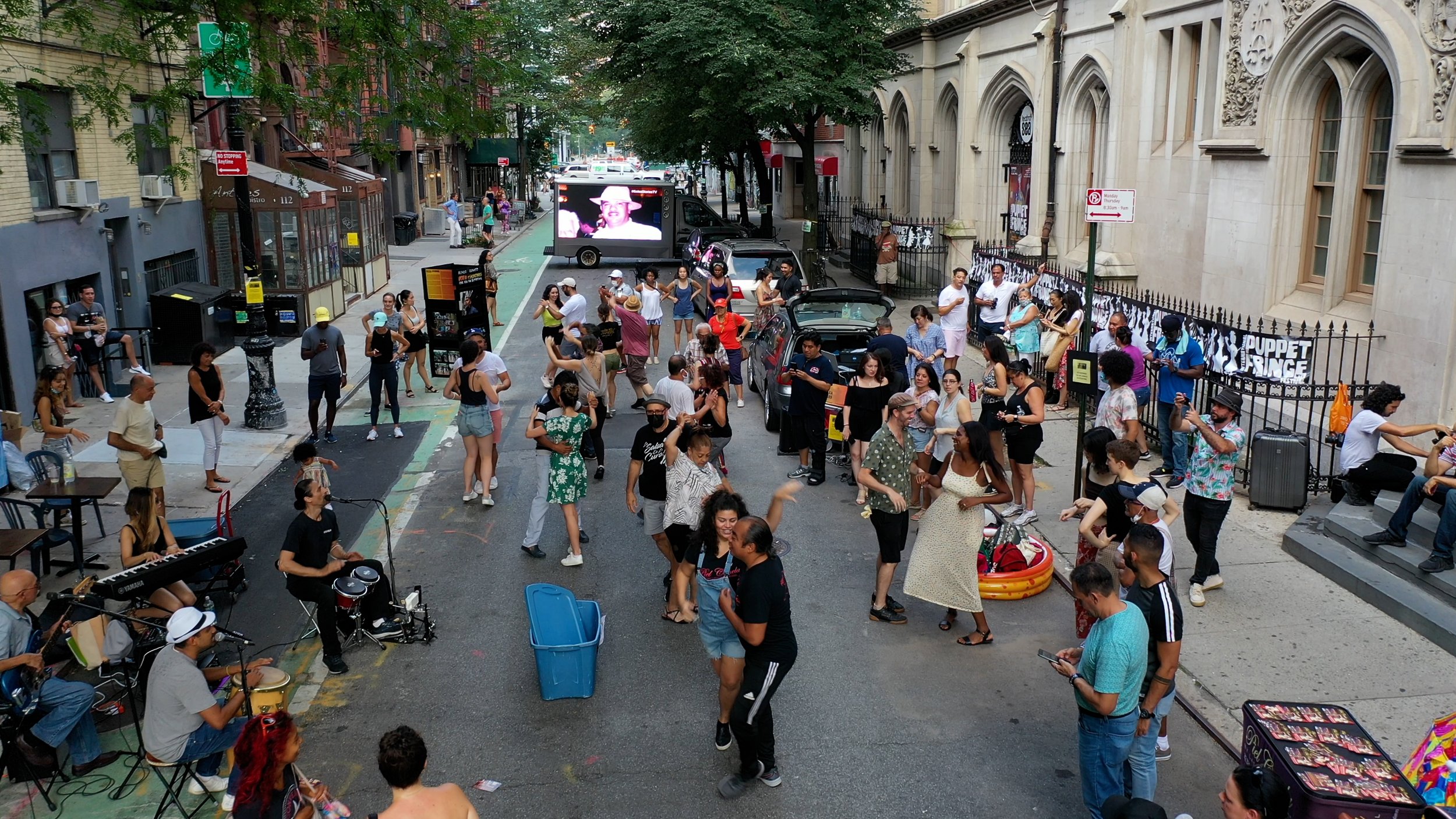Facts & Stats
In lower-income neighborhoods, cultural resources are “significantly” linked to better health, schooling, and security. The research, which was controlled for economic wellbeing, race, and ethnicity, found the presence of cultural resources is associated with:
A 14% decrease in cases of child abuse and neglect
A 5% decrease in obesity
An 18% increase in kids scoring in the top stratum on English and math exams
An 18% decrease in the serious crime rate
Cultural resources, like everything else, are distributed unequally around the City. The most affluent neighborhoods in Manhattan and western Brooklyn have extremely high concentrations of nonprofits, for-profits, artists, etc., while vast areas of the other boroughs have very few cultural resources.
New York State, Latino Population: 3,948,032
Latino Share of Population: 19.5%
New York City, Latino Population: 2,490,350
Latino Share of Population: 28.3%
New York, 2020 Census Profiles
-
New York, 2020 Census Profiles -
The New York Latino population grew from 3.4 million to 3.9 million, an increase of 15.5%.
By comparison, the non-Latino population of the state increased by only 1.8%
Source: NALEO Educational Fund, 2020 Census Profiles New York
Stats & Facts
Stats & Facts
The U.S. Hispanic population reached 62.5 million in 2021, up from 50.5 million in 2010. The 19% increase in the Hispanic population was faster than the nation’s 7% growth rate, but slower than the 23% increase in the Asian population. In 2021, Hispanics made up nearly one-in-five people in the U.S. (19%) – the 50 states and the District of Columbia. This is up from 16% in 2010 and just 5% in 1970.
Hispanics have played a major role in driving U.S. population growth over the past decade. The U.S. population grew by 23.1 million from 2010 to 2021, and Hispanics accounted for 52% of this increase – a greater share than any other racial or ethnic group. The number of non-Hispanic people who identify with two or more races increased by 8.3 million during this time, accounting for 36% of the overall U.S. population increase.
The number of Latinos who say they are multiracial has increased dramatically. Almost 28 million Latinos identified with more than one race in 2021, up from just 3 million in 2010. The increase could be due to a number of factors, including changes to the census form that make it easier for people to identify with multiple races and growing racial diversity that results in more Latinos identifying as multiracial.
Growth in multiracial Latinos comes primarily from those who identify as a specific race and “some other race” (i.e., those who write in a response to the race question) – a population that grew from 2.1 million to 25.0 million since 2010. Those who identify as a specific race and “some other race” now represent about 90% of multiracial Latinos. The increase was due almost entirely to growth in the number of those who identified as White and some other race, according to the 2020 census. At the same time, the number of Latinos who identified as White and no other race declined from 26.7 million in 2010 to 10.2 million in 2021.
People of Mexican origin accounted for nearly 60% (or about 37.2 million people) of the nation’s overall Hispanic population as of 2021. Those of Puerto Rican origin are the next largest group, at 5.8 million (another roughly 3.1 million Puerto Ricans live on the island as of 2021). Their numbers have been growing partly due to people leaving Puerto Rico and moving to the 50 states and the District of Columbia. Six other Hispanic origin groups in the U.S. have 1 million or more people each: Salvadorans, Cubans, Dominicans, Guatemalans, Colombians and Hondurans. In addition, by 2021, Spaniards accounted for just about 1 million U.S. Latinos.
The fastest population growth among U.S. Latinos has come among those with origins in Venezuela, the Dominican Republic, Honduras and Guatemala. From 2010 to 2021, the Venezuelan-origin population in the U.S. increased 172% to 660,000, by far the fastest growth rate. Three other groups saw growth rates exceeding 50% between 2010 and 2021: Dominicans increased by 59%, followed by Hondurans (57%) and Guatemalans (53%).
By contrast, the number of people of Mexican origin grew only 13% from 2010 to 2021, by far the smallest rate of increase among the top origin groups. At 15%, the Bolivian origin population saw the slowest growth rate among other groups with at least 100,000 Latinos in 2021.
SOURCE: PEW RESEARCH CENTER










